Australia’s got a whopping 66 venomous snakes, and guess what? They’re not shy about being some of the most toxic on the planet. In fact, Oz proudly claims the top 7 spots for the world’s most venomous snakes. But hold up—venom doesn’t always mean danger. It’s all about the snake’s vibe and hangout spots. The good news? Snake bites are rare, and thanks to some high-tech antivenin, deaths are like finding a needle in a haystack. If you get bitten, describe the snake but leave the snake-catching to the pros—it’s illegal and just plain risky. Forget the whisky remedy; it won’t cut it. And no, trying to suck out the venom is a bad idea. Swearing might feel right, but slap on a compress and haul yourself to a doc. Here are 10 of Australia’s bad boys, not ranked by danger but all packing a punch.
Table of Contents
1. Common Death Adder (Acanthophis antarcticus)
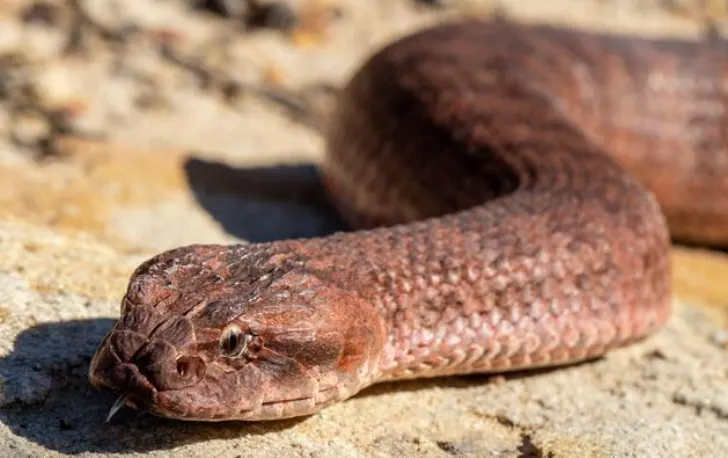
The venom of the common death adder might not top the charts in Australia (though it’s a heavyweight elsewhere). Before antivenin, about half of its bites led to death, often within two hours due to paralysis and respiratory failure. What makes it a threat? This ambush expert doesn’t back down when footsteps approach. Lucky for us, it’s not overly aggressive unless provoked. Unluckily, it’s a master of disguise, making accidental encounters common. Stout and short (2-3 feet), this live-birther has a fast strike, rivaling the coastal taipan. Sadly, their numbers are dropping, thanks to a feud with the cane toad.
2. Coastal Taipan (Oxyuranus scutellatus)
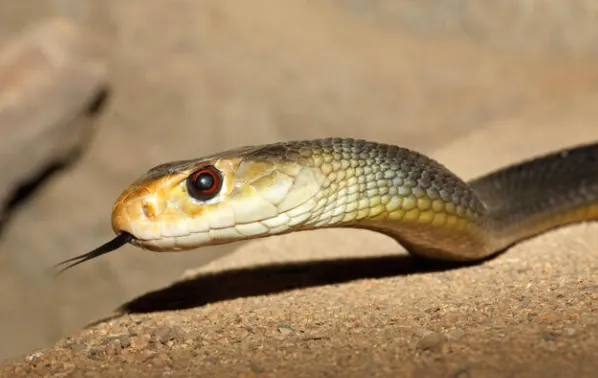
While we won’t rank these venomous snakes, the coastal taipan could be the stuff of nightmares. Roaming the eastern coast, it prefers sugarcane fields and agricultural areas. Though not confrontational, it’s known to launch itself when startled, delivering rapid bites. With the third most potent venom among land snakes, swift help is vital. Before the 1950s antivenin, almost all bites were fatal in under 60 minutes. Its fangs (13 mm) can bite through boots and thick socks, requiring hospitalization. As Australia’s second-longest venomous snake, it can exceed 6.5 feet, mirroring Africa’s black mamba in toxin power, hunting, and size. Mice, rats, and birds are its prey, and intriguingly, it has been found with a cane toad in its belly, though its relationship with the toxic toad remains a mystery. The coastal taipan’s population has risen since the cane toad’s introduction, potentially due to reduced competition or a new prey source. Found along the east and in New Guinea, these year-round hunters avoid areas with winter temperatures below the mid-60s Fahrenheit (17.2 to 18.3 degrees Celsius), primarily hunting by sight during mornings and occasionally at night in hot, dry weather.
3. Inland Taipan (Oxyuranus microlepidotus)
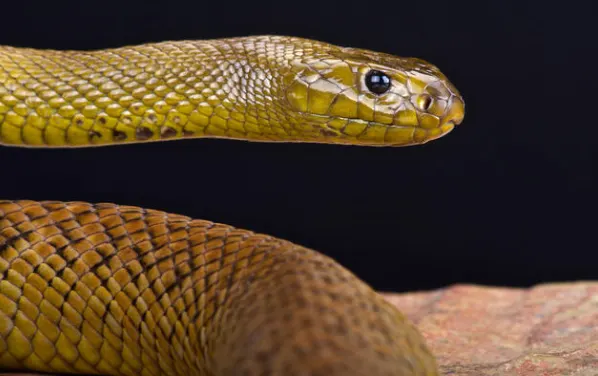
The inland taipan, dubbed the fierce snake, isn’t known for its aggression but for its lethal bite. Its venom surpasses that of any other reptile globally, over twice as potent to mammals as the next contender—a sea snake—and a staggering six times more powerful than the Eastern brown, ranking second for land snake venom. Familiar to indigenous people, early European naturalists thought it was a myth due to its elusiveness, misidentifying it as a coastal taipan or common brown. Rediscovered in the 1970s, this snake exclusively preys on mammals, such as rats, striking multiple times with each attack. With venom potent enough to kill 100 people per strike, it leaves little chance for prey. Untreated bites are usually fatal, even with extensive antivenin, resulting in months of hospitalization and potential organ damage. Despite its fearsome reputation, the inland taipan is relatively docile. Its remote habitat in arid central Australia makes human encounters extremely rare, with most bites occurring among professional snake handlers. Adult lengths average around 6 feet, but some reach 9 feet. They lay 12 to 24 eggs in burrows, and even hatchlings possess fully potent venom. Certain snakes, like the Mulga, are immune to taipan venom and can kill smaller snakes, while the Perentie, a large monitor lizard, preys on adult inland taipans.
4. Eastern Brown Snake (Pseudonaja textilis)

The Eastern brown snake boasts the second most potent venom globally, measured by median lethal dose (LD50) values. Its venom is so potent that even a small amount can lead to headaches within 15 minutes, with the potential for cerebral hemorrhage or a heart attack within an hour. Despite being a rodent-hunter with the smallest fangs and the lowest volume of venom on this list, it provides little comfort considering its deadly bite.
In attacks or defense, it raises its head, leading to most human bites occurring on the upper thigh. After a bite, it may encircle and constrict prey, holding it until it succumbs. Despite its reputation, it’s not particularly aggressive. Adults typically measure around 6 feet, with some extending to 7.5 feet or longer, showcasing a slender build for its length.
Its hunting strategy involves tracking prey into burrows or shelters, where it may reside until ready to hunt again. Primarily a day hunter, juveniles often venture out at night, especially in warmer seasons. The Eastern brown snake becomes inactive and brumates through nearly half of the year during winter.
Responsible for the majority of snakebite deaths in Australia, this species thrives in suburbs and farmlands, where its preferred prey, the introduced house mouse, is abundant. Preferring warmer, drier areas, its range minimizes interaction with cane toads, contributing to its relatively stable population.
5. King Brown Snake (Pseudechis australis)
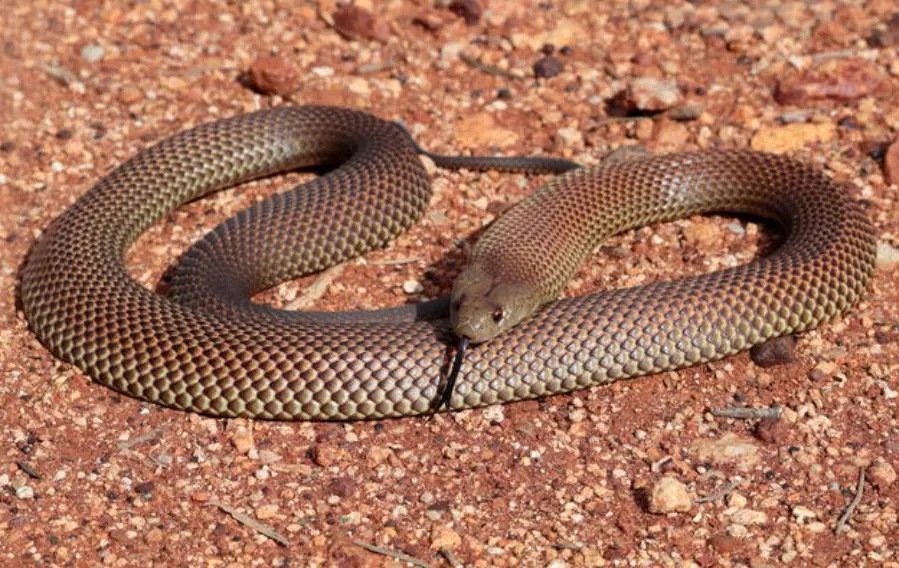
True to its name, the king brown snake earns its title as the largest venomous snake in Australia. Ironically, it’s not always brown, showcasing a highly variable appearance, from nearly black to light tan with a reticulated pattern. Growing over 11 feet, particularly in the northern regions, it exhibits a range of builds, from somewhat slender to stocky, with larger specimens weighing around 15 pounds.
Its adaptable nature extends to habitat and diet, thriving in arid areas near water, fields, and wooded regions. Known as the mulga snake, it feasts on snakes, lizards, frogs, small mammals, and even the cane toad, though it tends to avoid the toad’s poisonous secretions. However, due to its visual variety and extensive range, it’s often misidentified in the wild across Australia.
Despite its intimidating size, the king brown’s venom, while not benign, is relatively mild in Australian terms. Swift administration of black snake antivenin within a few hours significantly increases survivability. Although untreated bites are unlikely to be fatal, they may result in serious muscle and kidney damage. Notably, the snake tends to strike repeatedly, deeply envenomating its target, and possesses a substantial venom payload, possibly the largest among venomous snakes globally. While not particularly aggressive, king browns, primarily afternoon and evening hunters, have rare interactions with humans, including verified cases of bites on sleeping individuals.
6. Red-bellied Black Snake (Pseudechis porphyricus)
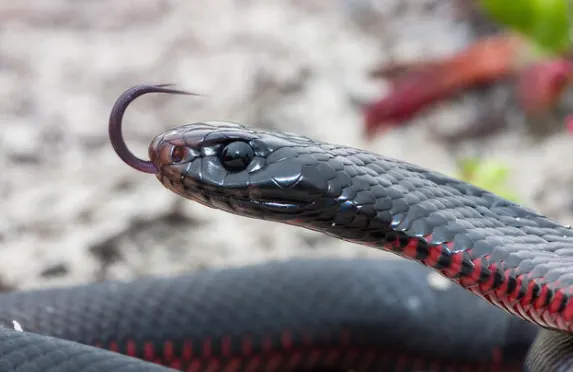
Unlike its more menacing Australian counterparts, the red-bellied black snake is surprisingly popular among Aussie reptile keepers. However, its potential for causing significant harm would be rightfully feared anywhere else in the world.
Moderately-sized, typically around 4 feet (1.2 meters) but occasionally surpassing 8 feet (2.4 meters), a large specimen can tip the scales at over 22 pounds (9.9 kilograms). Encounters with this snake are common, even in urban areas, and it’s a leading cause of snakebites in Australian dogs.
While there are no recorded human deaths attributed to this snake, serious bites have necessitated over a week of recovery, even with antivenin, and have, in some cases, resulted in amputations. Red-bellied black snakes are found along the Eastern coast of Australia, favoring wet, marshy areas or ponds, where they primarily prey on frogs, fish, other snakes, and occasionally small rodents. They give birth to live young, usually fewer than 30 at a time.
This glossy black snake generally avoids confrontation and typically strikes only when seriously provoked. Despite coexisting with the cane toad, recent studies indicate a growing tolerance to the toad’s secretions, and the snake tends to avoid it as prey. Despite this adaptation, their population is dwindling due to habitat fragmentation and predation by feral cats, which are resistant to their venom.
7. Mainland Tiger Snake (Notechis scutatus)
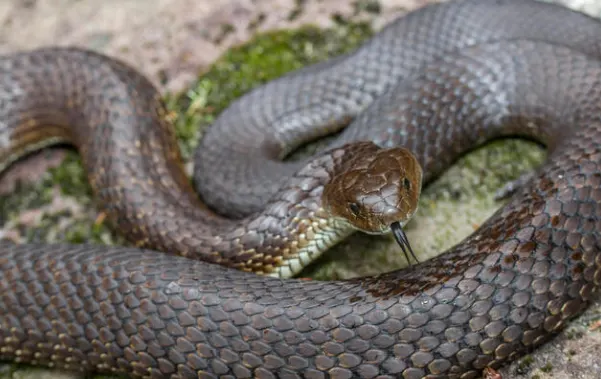
The tiger snake stands out as a highly diverse venomous serpent. Debates persist on whether it has subspecies, particularly those on islands like Tasmania, or if it’s a singular classification. Regardless, it contributes significantly to reported snake bites (around 17 percent), with an untreated fatality estimate of roughly 50 percent.
This robust species typically measures about 4 feet (1.2 meters), with a recorded length exceeding 6 feet (1.8 meters). Tiger snakes are widespread along Australia’s coastline, favoring extremely wet habitats and showcasing strong swimming abilities. Surprisingly, they’ve been observed climbing trees. Exhibiting relative cold tolerance, they continue hunting into the early evening. Additionally, they are a live-bearing species.
Given the considerable variability in their coloration, including the absence of tiger-like striping, identifying the appropriate antivenin relies on analyzing the bite area.
- Enchi Ball Python: A Unique and Stunning Morph of Python regius - March 27, 2025
- Emerald Tree Monitor: The Enigmatic Green Guardian of the Rainforest - March 26, 2025
- The Egyptian Cobra (Naja haje): A Fascinating Serpent - March 25, 2025
